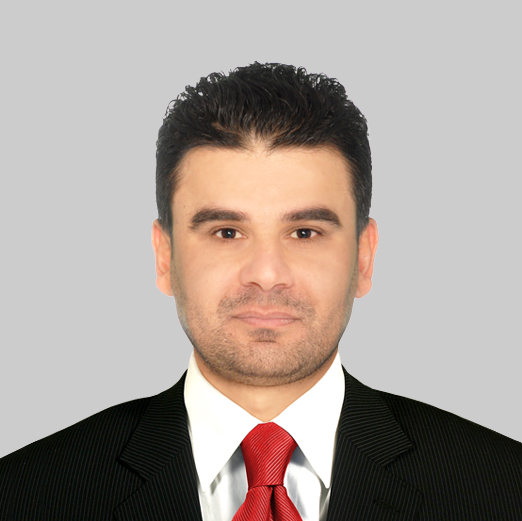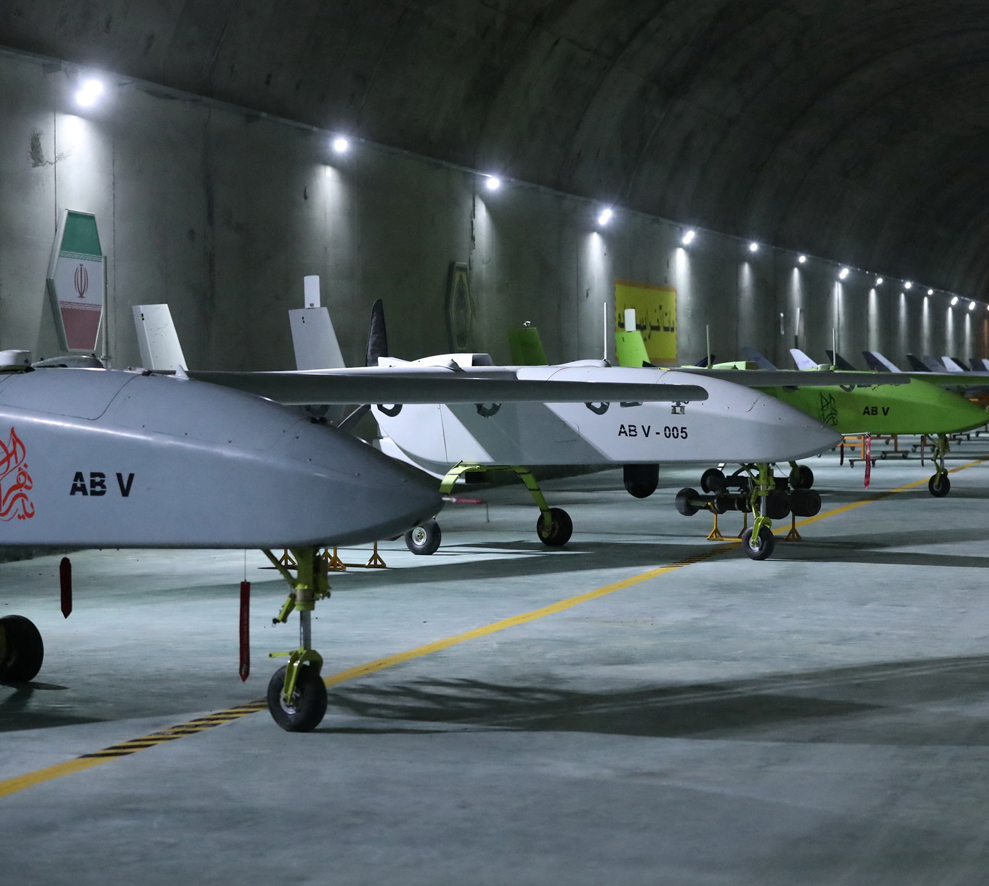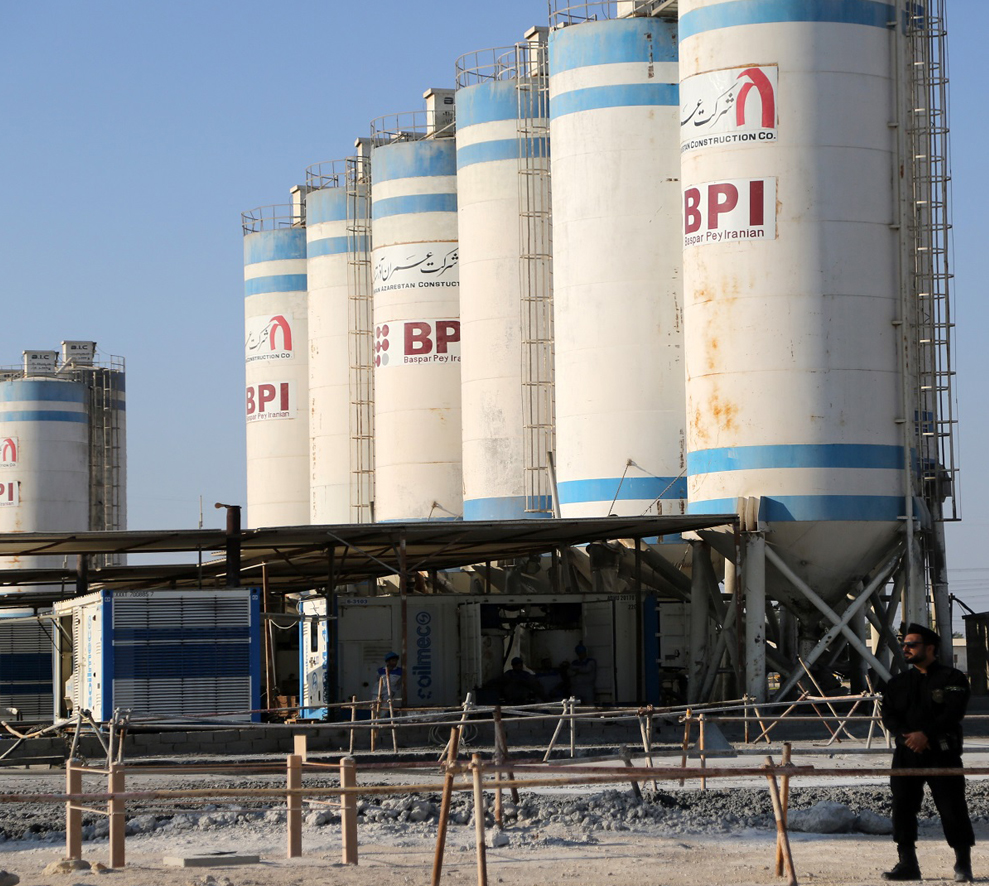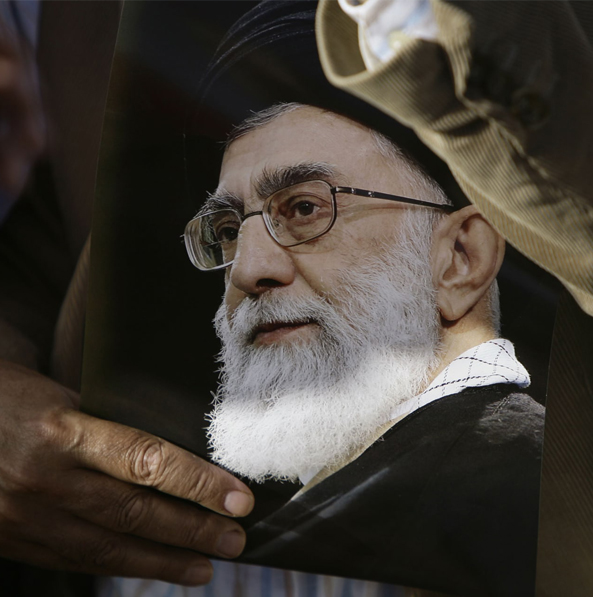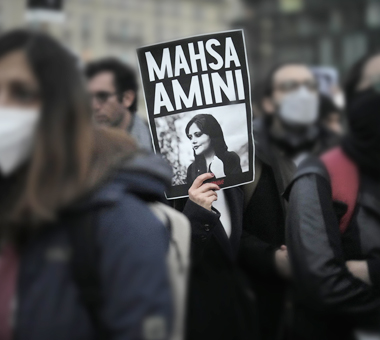The Iranian role in the Ukrainian crisis is present for the second time, in a war that broke out on the European continent, after Iran’s previous participation in the Bosnian war in 1996. However, the main difference this time is that the Iranian participation in Ukraine is of wider presence and a greater wide scale. While the Iranian role in the Bosnian war was limited only to the participation of fighters from the Revolutionary Guards, as well as limited support with light weapons for Bosnian fighters. But Iran’s participation in Ukraine was in other aspects, most notably of which was providing broad support to Russia, specifically at the level of drones, ballistic missiles, and the of IRGC advisers presence. This raised many questions and inquiries about the nature of the strategic motives behind this Iranian role.
Iranian Multi-Directional Desire
Russia found in Iran an actor that can be employed in the Ukrainian crisis, especially since Iran has motives to participate in the crisis, most notably is the desire to annoy the American side. In order to reduce the military burden on Russia and reduce its military purity, Tehran has provided Moscow with many drones of various types, most notably the Shahed 136, which has a range of 2,000 kilometers. This drone is capable of carrying a warhead or 50 kilograms of explosives, and can target strategic sites or vital infrastructure facilities, such as airports, power stations, or communication networks. Moscow renamed Shahed drone which are aircraft designed to suit the kamikaze technique – suicide drones. Iran also helped the Russian forces in destroying fixed targets near the front lines; Russia's use of such aircraft enabled several strikes in Ukraine's cities during the recent weeks, as a means of compensating for the military retreat on some southern fronts, specifically in the city of Kherson.
Through its involvement in the Ukrainian crisis, Iran is trying to expand areas of cooperation with Russia, especially at the level of weapons deals, Iran is also trying to benefit from the lessons of the war in Ukraine, at the level of developing military doctrine, raising combat efficiency, improving the technical capability of drones, but overall: Iran recognizes how important attrition of the West is, specifically the United States, whether politically and economically in this crisis, in order to relieve pressure on it in the Middle East, for Iran believes that prolonging the conflict in Ukraine may lead to distracting the West from confronting Iran’s agenda in the Middle East, despite the serious strategic costs behind this endeavor, notably the most is the possibility of the United States and its allies to adapt a tougher policy to confront Iran.
The nature of the Iranian role in the Ukrainian crisis has not only raised the ire of the Ukrainian side, this was evident in the positions issued by other countries, including Israel, Britain, and the United States. Fears of these countries are amounting amid intelligence reports about an Iranian effort to provide Russia not only with more drones, but also with short-range ballistic missiles, most notably Fateh 110 missiles and Zulfiqar missiles, whose ranges range is from 250 to 700 km, which can be considered an escalation among the most accurate missiles in Iran's ballistic missile arsenal. The first time Iran used this arsenal was in a missile strike against ISIS positions in Syria 2017, as well as in the attacks on Ain al-Assad base, west of Baghdad, in January 2020, in response to the assassination of then-Quds Force commander Qassem Soleimani.
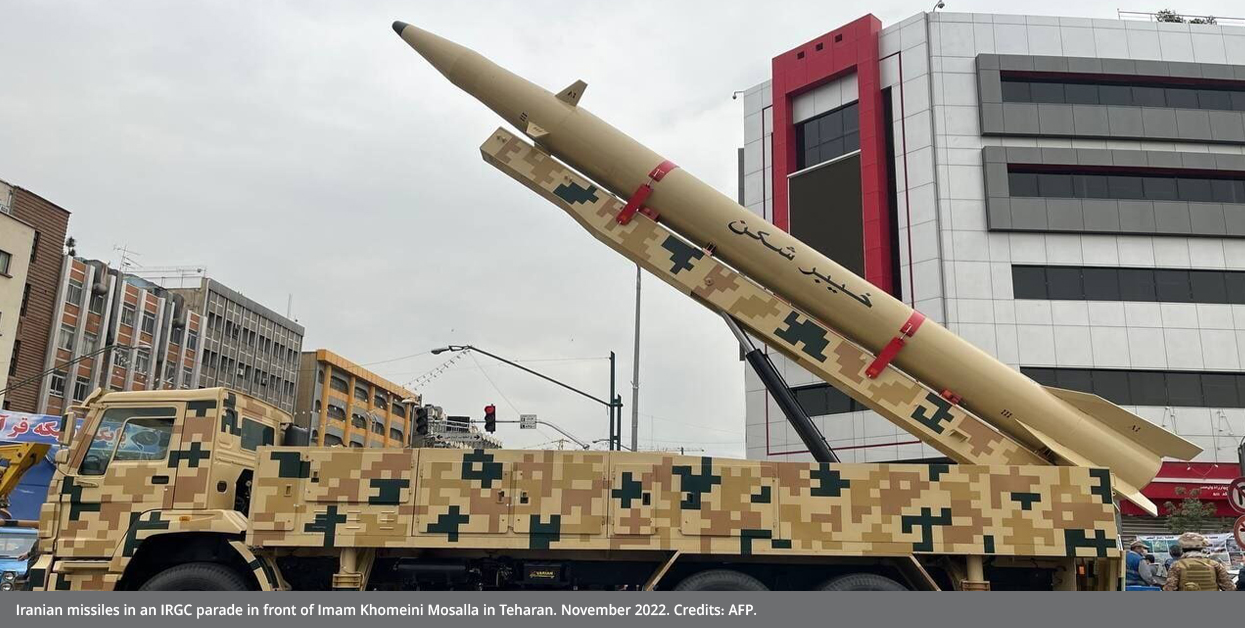
The Russian use of Iran's military capabilities provided Iran with an important strategic exit to maintain its military arsenal, most important of which are short-range Iskander missiles, short- and medium-range Grad missiles (BM-21), and air-to-ground cruise missiles, as they are more expensive than Iranian missiles. In this context, Iran also seeks, through its continuous support for Russia (specifically at the level of weapons and advisers) to raise its strategic value in the Russian ideological order, specifically at the level of strategic partnership with Russia against the West. The result of this support for Russia might be obtaining the developed Russian jet fighters in return. Reports revealed that Russia is preparing to deliver Iran a number of Sukhoi-35 aircraft. Tehran is likely to request the S-400 air defense system.
Strategic Imperatives behind Iran's Role
Iran realizes that the strategic value, the Ukrainian arena may provide, will make it able to address many of the challenges facing its defense industries, specifically in the possibility of increasing the effectiveness of its drones and ballistic missiles in order to be superior to the Western defense systems used by the Ukrainian army, most notably is the American "Stinger" anti-aircraft missiles. The military goal of Iran is resembled in seeking to apply the lessons learned from the Ukrainian arena, regarding developing the futuristic weapons and military tactics in the Middle East. This support, from an Iranian point of view, comes within the contest of expanding Iran’s attack against the West. For decades, Iran sought to expand its influence while weakening its rivals, by providing weapons --including drones and missiles Iran provided to Russia- to its proxies in countries such as Lebanon, Yemen, and the Gaza Strip.
Away from the battlefield in Ukraine, there is a need for Iran for Russia to remain a present country at the international level, this currently depends on Russia’s course of operations in Ukraine: Russia's defeat will lead to its internal positioning, and to the concentration of its strategic and geopolitical momentum at the regional level, which means Iran's loss of a supporter on the international stage, the matter that will have repercussions on the regionally and internationally Iranian issues present, most notably are the negotiations on its nuclear file, besides the Russian vote in favor of Iran in the Security Council.
Moreover, the Ukraine crisis may help Iran to improve its position in Russia's point of view, via Iran’s role in Moscow's efforts to counter Western the strategies aimed at imposing sanctions, especially since Tehran has experience in evading sanctions or mitigating their economic effects.
Such amount of Iranian economic and military roles might be matched by an Iranian demand for Russia to make concessions in positions that contradict Russia’s interests, as Tehran was not been able to exert the necessary influence to change such positions in the past. These positions include security cooperation between Russia and Israel in the Syrian issue. This role may also be used by increasing its involvement in the regions of Eurasia. This involvement was translated into its accession to the Shanghai Economic Cooperation Organization, where Russia is the strongest present in regions such as Central Asia.
As a result, the Ukraine crisis gave Iran a way to establish more equitable and balanced relations with a power like Russia, even though supplying drones to Russia has had a significant cost to Tehran, as it reduced the U.S. desire, by the administration of President Joe Biden, to reach a new nuclear agreement with Iran, and also prompted the European Union to impose sanctions on Iran for its role in the Ukraine crisis.
In addition to the geopolitical gains, or strategic trade-offs that Russia may offer Iran, which may include modernizing its Iranian air force and air defense systems, as well as acquiring advanced nuclear technologies, the involvement of Iranian drones on the battlefield provides Iran's defense industries with an actual testing ground that serves their future designs. Iran used to give the designs of its weapons to its proxies, allowing them to use these weapons then send their tests to Iran. At the very least, Iran will use the drones returned from the Russian in order to developed more modern and advanced models. There are reports that talked about broader Chinese cooperation in enabling Iran to manufacture drones and supply them to Russia. In addition, the increasing Russian use of drones will give a strong boost to Iranian exports of such drones, after Iran previously exported its drones to a limited number of countries like Venezuela, Tajikistan, Sudan, and Ethiopia. Thus, the Russian use of Iranian drones is a free advertisement thereto, especially since those drones were previously used in limited attacks and against low-intensity operations. This has changed after those drones were used as the main weapon in daily battles inside Ukraine, whether on the "high-intensity" front lines or in attacks deep inside Ukraine, which is still undergoes a practical tests.
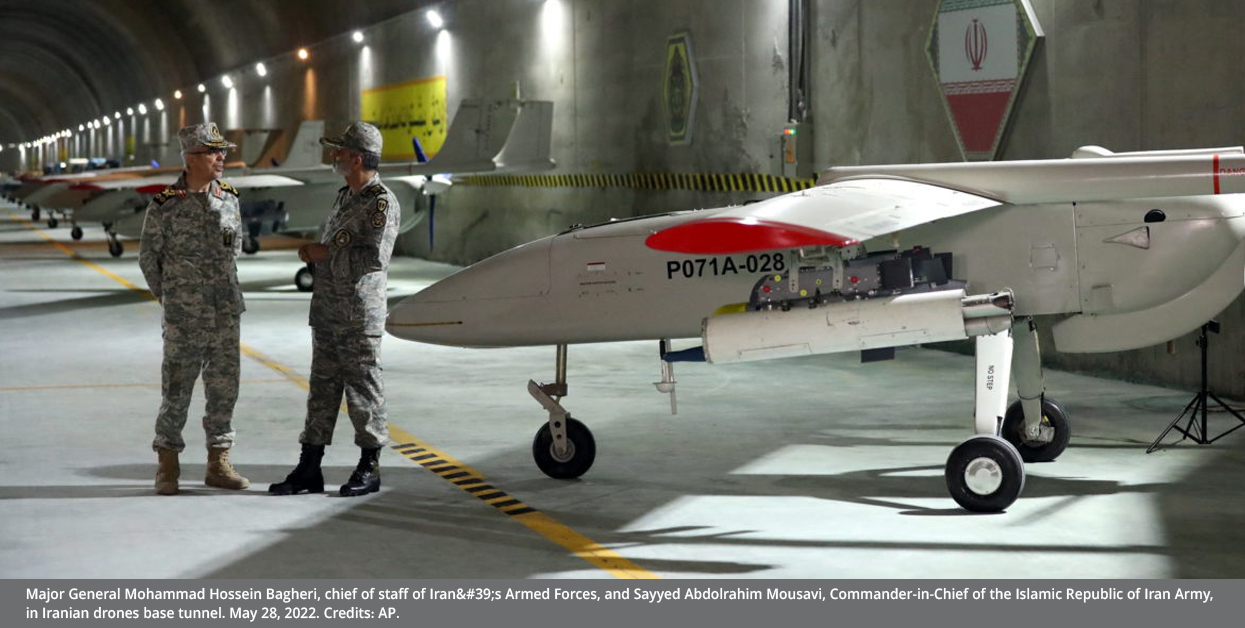
Complicated Repercussions
Iran's involvement in the Ukrainian crisis created significant repercussions on the future of the security system in Europe, especially in light of the applications of the hybrid war doctrine the Russians began to adopt in this war, after the failure of the strategy of comprehensive attack and general mobilization, which depends in large part on the use of suicide drones and the role of advisers to the Revolutionary Guards in reorganizing the war strategy, according to the new military reality imposed by the Ukrainian army. Although the Iranian role did not lead to that significant change in the course of the Ukrainian army, but this role will have consequences the longer the conflict continues, as Russia could exploit Iran's arms and military equipment licenses to undermine the long-term viability of Ukraine's defense strategy.
There are risks and repercussions on the security of the Middle East and Europe, as a result of Iranian participation in the Ukrainian crisis. Iran does not only provide military support, but also provides the role played by Iranian drones in destabilizing the Middle East, where such drones were used extensively in attacks against Saudi and Israeli targets, and also in harassing US forces in the waters of the Persian Gulf, as well as the drones’ destabilizing role for international navigation in the region. The transfer and development of this technology would multiply those risks, transferring them similarly to Europe. European countries, such as Germany, are already monitoring the activity of Iranian drones in Ukraine, studying their development, and looking at ways to confront them, especially with reports that Tehran and Moscow are considering manufacturing these drones inside Russia to be used heavily in their military operations in Ukraine, an experience that may be transferred to other countries such as Venezuela or North Korea.
Also in this context, it can be said that Iran has tried, through its current role in the Ukrainian crisis, to reproduce the same gains it obtained in previous international crises, such as in Afghanistan and Iraq. Iran aspires aspires to present itself as a reliable partner through its support for Russia, as well as to reserve an important position in the gas export map to compensate for the European need, as an entry point to resume nuclear talks, and -most importantly- to strengthen its position in the map of strategic balances in the Middle East, which has begun to tilt In favor of other powers, most notably Israel. This does not negate the fact that Iran's rapprochement with Russia, in the current crisis, is more tactical than strategic. Future tracks of the Ukrainian crisis may determine the strength and weakness features of this rapprochement, especially if international sanctions on the two countries succeed in undermining the growing cooperation between them in the Ukrainian crisis, or making new offers to Tehran that push it to stop its role there.
Keep in touch
In-depth analyses delivered weekly.
